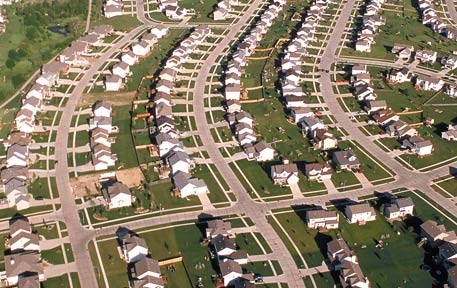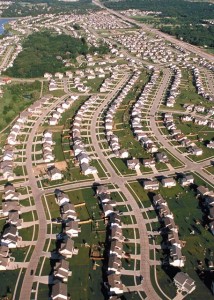I lived in Colorado Springs for a few months when I first arrived in Colorado. I didn’t know anyone when I arrived. I had orchestrated my place to live through email and Skype, and had a few names of friends of friends that I could contact. But I was On My Own.
I arrived a little over two weeks prior to the Super Bowl. Despite being a total newcomer to the area, I found myself partaking in the festive American ritual of The Party, courtesy of one of these friends of friends. It was located in the far-flung northeastern corner of the Springs, north of the Air Force Base, in one of the many housing developments that characterize most of the Springs’ residential arrangement.
For those who have never been, Colorado Springs roads are characterized by quite a few large, north-south routes on either side of I-25, and only a few good connections east-west, topography creating a bit of a road building challenge which results in bottlenecks. There is a compact downtown, and a small historic district called Old Colorado City (which was once a separate town), but most of the rest of it looks like a template for Suburbia.
Heading out to the party, making my awkward west-east connections, I drove past housing developments and strip malls. These followed a steady rhythm internally as well as externally. Neighborhoods often had limited entry and exit points via main roads; the web of streets within the neighborhood featured houses that were in many ways very similar to each other; sometimes there was a walking path nearby; sometimes there was a park in the area; in order to visit this park (if applicable) or any kind of store, residents needed to get in the car and drive to a parking lot or one of the strip malls or store groupings concentrated around a big-box mega-center such as Target. Each neighborhood functioned as an entirely discrete unit, which, however, was strangely isolated from practical things like corner stores, gas stations, and parks.
My Super Bowl party hosts lived in a development situated on a bit of a rise. Coming in from the main road, I was granted a vista to the west, where the sun was slowly setting, glinting over a sea of roofs which looked, from this distance, like the interchangeable pieces of a Monopoly set. Indeed, despite the red twinkle indicating storefronts for various malls, it looked like one enormous, homogeneous neighborhood. I was reminded of the overhead shots during the opening credits of the series Weeds.
It got me thinking. About planning and an adherence to logic and order. About variations on a theme (think music, the visual arts), and what makes some variations more pleasing than others. About organic growth (not like in your garden), and checklists.
I don’t want to get into a discussion on the relative merits and drawbacks of planned living communities, since that’s not the focus of this blog, but I do see a connection between this type of reliance on planning in the physical world of infrastructure, and in fact within companies, and planned art.
Almost everyone that has set out to tell (write) a story, whether short or long, at one point probably considers the question: would it be wise/profitable/advantageous/required/etc to have an outline, a sort of blueprint, so that I have a basic idea of where I’m going and can make sense of the act of getting there?
And in fact there can be many pros. The more complex the subject is, or the greater the number of characters, or the longer the story is, the more helpful it can be to have a kind of cheat sheet for organizing our thoughts. But in my experience, the difficulty is then in keeping this cheat sheet in its proper place. Because it can become very tyrannical. No, so-and-so is supposed to be here at this particular time, and he has to feel this way about this, otherwise we’ll lose the whole plot…
And then it seems to be inevitable that just a little farther down the road, the story gets really hard. It’s like a three-year-old in the supermarket, throwing a tantrum. It doesn’t like anything I’m suggesting, the characters are in a torpor (“Hey, you tell me where we’re going!”), and, despite the fact that there’s a Plan in place, nothing makes any sense anymore.
Know the feeling?
Every time I try to plan something, it doesn’t work out. The story withers on the vine and calcifies. I can water it as much as I want; it’s not going to bloom. But the outline was so logical! It was meant to help me out. What’s going on here?
Good stories, in my experience, have a life of their own (this is what I mean by organic). The problem with outlines is that they often act like the bait on a spring-loaded trap, which when I reach for it, drops an iron cage over the lush garden of the story with a sign mounted on it: Caution! Agenda at Work! And then I can’t get at any of the plants. I can’t prune what needs pruning, and uproot the weeds. And I sure can’t plant anything new.
I think in the Springs they were mostly overtaken by the growth in the population and the need to provide housing. I surmise there was an army of planners requiring X type of services for Y number of people, and that there was a budget. But I couldn’t help regretting the loss of an actual neighborhood. With a corner store that I can walk to, to buy a sandwich and a newspaper.
That’s the dangerous thing about having story outline, in my view. It becomes the budget; it becomes a checklist of requirements. Blueprints are great for many things. But they don’t leave a lot of room for new stuff.




